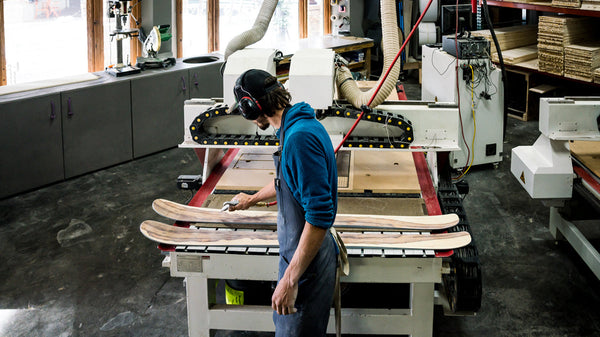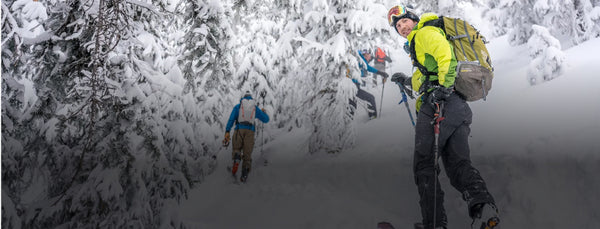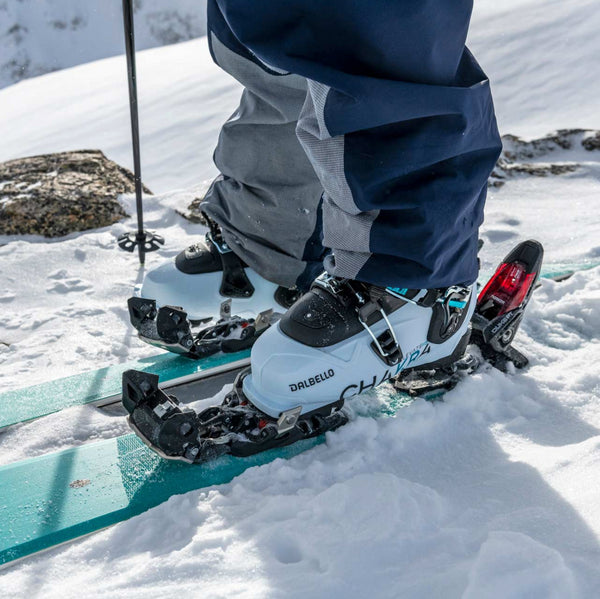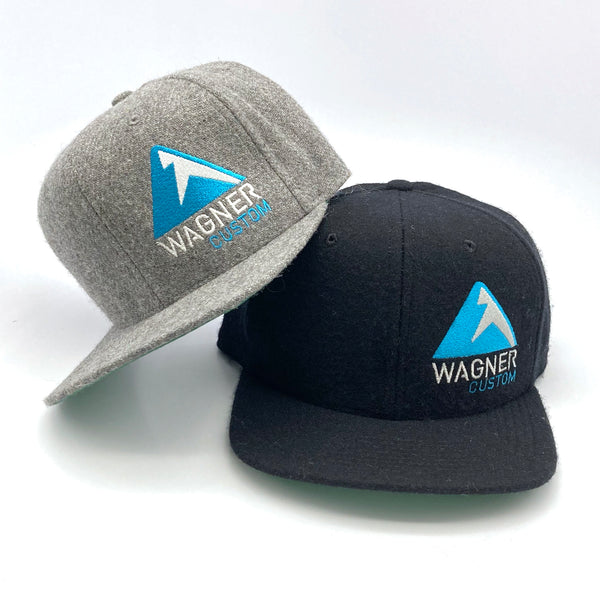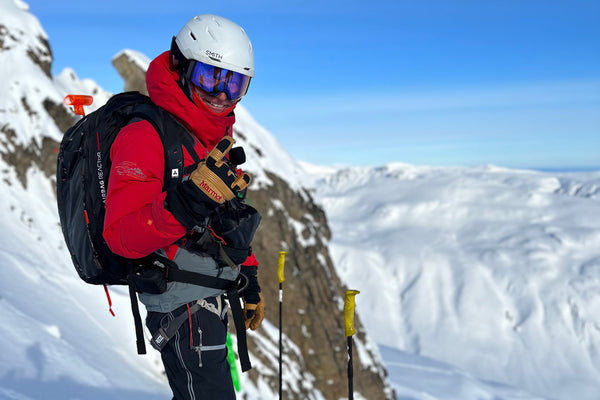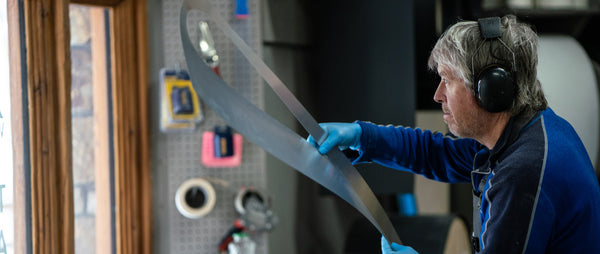
HOW TO BUY BOOTS
We know that there is nothing sexier than a shiny new pair of skis. (Especially if they’re custom made from Wagner.) But listen up, people: The single most important piece of your gear is your boots.
(Sorry, Pete Wagner.)
“It’s like having the right tires to drive on the snow, or the right laptop to do your job,” said Mark Elling, bootfitter at Mt. Bachelor’s Gravity Sports, curriculum director of Masterfit University (MFU) and staff manager of the MFU bootfitting workshops. (He’s also a former board-certified pedorthist, an author on ski technique, and level III PSIA Alpine Instructor.) “Your own ski boots are at that level of importance. Your life depends on them, ultimately, because that’s what controls your skis.”
Note that he specified your “own” boots, not the bacteria-laden mush-buckets for hire at the base area shop. “Renting boots is counter to every goal—to be safe and have fun, and potentially to even be comfortable and warm.”
If that’s not enough motivation for you to make the investment, Elling urges you to do it for your ski partners. As he, um, diplomatically stated, “The last thing you want to be is the big, whiny bitch in your group because your feet suck.”
Categories of boots
All boots fall into five categories. Most beginner to advanced skiers will find themselves in the all-mountain traditional or all-mountain walk category.
Frontside
For technically skilled skiers who love to carve up corduroy. These boots are performance-oriented, with snug fits and stiff flexes. Not built for comfort.
All-mountain traditional
Boots that ski all over the mountain with relative comfort.
All-mountain walk
These boots have a walk mode (aka bar mode). For those who ski all over the mountain and want comfort for short bootpacks and/or après.
Freeride
These medium-weight boots have walk mode and tech fittings, so they can be worn at the resort or in the backcountry for touring.
Backcountry boot
Lightweight and built for speed with tech fittings and Vibram soles. Designed for uphill tourability.
Some pro tips
1) Do not buy boots online (unless you’ve tried on that exact model and size in-person). Go to a brick-and-mortar store and work with someone who knows boots. Preferably it should be a specialty ski-retailer, because then you’re likely going to be working with someone who is also a skier. If you do go to a high-volume store, REI is a good bet because their bootfitters are all trained by Masterfit.
2) Buying boots is like any relationship— whether you’re buying a car or equipment or dating, there should be some amount of interest in you as a person and what your goals are. It all starts with conversation, and it should feel as though you are the focus.
3) The shop person should look at your foot and leg and measure you without shoes on. “No good bootfitter is going to believe you about what size you are until they check you on a measuring device. They’re also looking at whether your foot is narrow, medium, or wide.” (Side note: Plan on bringing ski socks or buying new ones, because the try-on bin was a casualty of COVID-19.)
4) Keep your boots dry. Most serious skiers have boot dryers. Dry boots last longer, because the liners will re-loft, and they won’t smell bad.
Boot Fit Points
After doing an analysis of your feet, ability level, and goals, the bootfitter will likely bring you several pairs of boots to try. What people perceive to be a comfortable ski boot can vary widely depending on experience, ability level, or tolerance for compression. New ski boots should feel a little too snug, like a very firm handshake. If you go too big for comfort, you will end up cranking the buckles too tight when the boot breaks in, which distorts the boot shape and creates other problems. Another common issue with too-big boots is your heel won’t stay in the heel pocket and your toes will slam into the front. “You need a fitted boot to keep your toes from sliding forward. There are 10 different ways a bootfitter can make more room for your toes, which is a better way to go than going up a size.” (See mistake #3 in our article 10 Biggest Mistakes Skiers Make.)
The key points of fit are going to be your instep, which is what holds your heel in the pocket of the boot, and your shin. Your instep should feel snug and comfortable, and you shouldn’t feel sharp pressure points. The pressure on your shin should be evenly distributed, and you should have a progressive flex with no shelf or breakover point. “If those spots feel good, almost everything else is workable with a good bootfitter. But even the best bootfitter can’t fix a bad fit in those two spots.”
As far as flex goes, the stiffness you need depends on your weight, height, and ability level. Regardless, Elling said when you press your shin against it, the boot should prompt you into a skiing stance that you can relax against. If the boot is too soft, you’ll feel like you’re doing a wall sit and your quads will be tired. Another sign a boot is too soft is if the lower boot bulges as the upper boot collides into it.
A boot that is too stiff, on the other hand, won’t let your ankle bend properly, which means your knee and hip won’t follow suit. “Then the only flexion that occurs is your ass going into the backseat,” Elling said. “You have to have true ankle flexion to ski well.” You want a boot that allows you to flex the upper cuff. If you don’t see the upper cuff move relative to the lower boot, that’s too stiff. Also, keep in mind that boots will be softer in a warm shop; they stiffen up in the cold. When in doubt, choose the stronger flex. “If it’s a little too stiff, a good bootfitter can make it softer. But you can’t go the other way.”
What about insoles? And socks?
When it comes to insoles, Elling said you should replace the ones that come with the boot with either an off-the rack insole or a custom one. “Most people get improvement in comfort and performance, regardless of their skill. The off-the-rack insole is made for average Joe, so if you have low or high arch, those may not be the best solution. People who have nonaverage feet, who are looking for true performance or balance advantage, or those who are knock-kneed or bow-legged should get custom insoles.” Custom insoles last for longer, too, so they’re worth the investment.
Socks are super important. If your boot is new, start with a thinner sock. Over time, when it packs out, you can get a thicker one to take up volume. Elling recommends a new pair of socks for each day on a ski trip, because when they get clogged with sweat, they’re not as warm. (See mistake #2 in our article 10 Biggest Mistakes Skiers Make.)
Overall, Elling said that the most important thing about buying new boots is that they don’t have to be perfect out of the box. They’ll get more comfortable the more you ski in them, and bootfitters can do wonders. For more information, go to bootfitters.com.
--
Article by Kimberly Beekman
Kimberly Beekman is the former editor-in-chief of the late, great Skiing Magazine (RIP), and a longtime editor of SKI Magazine before that. She currently uses the title of “freelancer” as a beard to ski powder all over the world. She lives in Steamboat, Colorado, with her wonderful daughter and terrible cat.

